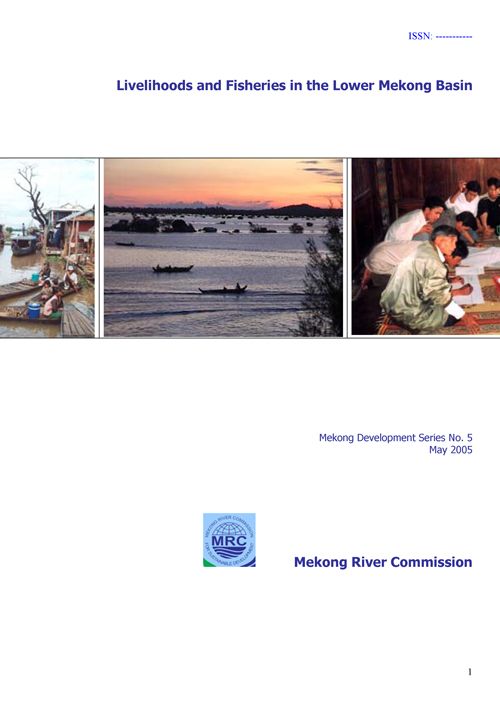Livelihoods and fisheries in the lower Mekong basin
31 May 2005 | 638 Downloads | .pdf | 479.68 KB | Livelihoods, gender and social issues, Cambodia, Lao PDR, Thailand, Vietnam
People who manage fisheries in Cambodia, Lao PDR, Thailand and Viet Nam are beginning to think of themselves as part of a community within a common river basin. This is a different way of thinking; managing the fisheries is no longer seen as an isolated activity but as a part of the life of people who live along the Mekong River and its tributaries. Previously, fisheries managers might have thought of their job as safeguarding or increasing fish production, but now fisheries managers must share in the effort to alleviate poverty and help local people and their communities participate in local and national formulation of policies, laws and programs relating to resource management.
The specialised sets of words used by groups of people working to alleviate poverty – and the comfortable ways in which they communicate sophisticated meanings and share large amounts of specific information efficiently – must now be learned by fisheries managers. The Technical Advisory Body for Fisheries Management, like a number of other fisheries and development organisations, increasingly reflect “livelihoods” in mission statements and objectives. So, what we can understand livelihoods and livelihoods approaches to mean, and what do others understand them to mean?
According to studies undertaken in the basin, livelihoods approaches are about developing a deep understanding, putting people are at the centre of development, sharing rich information with others (from government and NGOs) about people interacting with resources. Livelihoods analyses (a part of livelihoods approaches) are systematic yet flexible approaches to understanding people’s situations, people’s access to resources, the ways in which people are vulnerable, and the things which influence their lives. Such analyses can provide a complex yet more complete picture of the natural environment and the way that it supports people’s livelihoods and help us to recognise that poor people deal with aquatic resources management rather than just fisheries or aquaculture.
Taking a livelihoods approach helps us to recognise and even reconsider the way we think about knowledge and learning and to try to capture not one (dominant) view but the range of views held by those who affect the fishery or are affected by it. Such approaches encourage us to enhance the role for local participants from the stage of planning, to ensure that people’s knowledge and understanding shapes proposed agendas, timeframes, budgets and ways of working. Participation means sharing the capacity to do work.
To support sustainable improvement in the lives of people whose livelihoods are based on fisheries and aquaculture, capacity can be built for a broader ‘livelihoods’ approach, with links to other sectors in order to better support multi-faceted livelihoods, incorporated into planning and policy development, and considering regional as well as national livelihoods approaches.
Working toward managing fisheries as part of a community within a common river basin, will give rise to livelihoods approaches that translate learning about people’s livelihoods into useful options for change that can be monitored and evaluated against the objectives of people who are poor.
Creative Commons Attribution.

